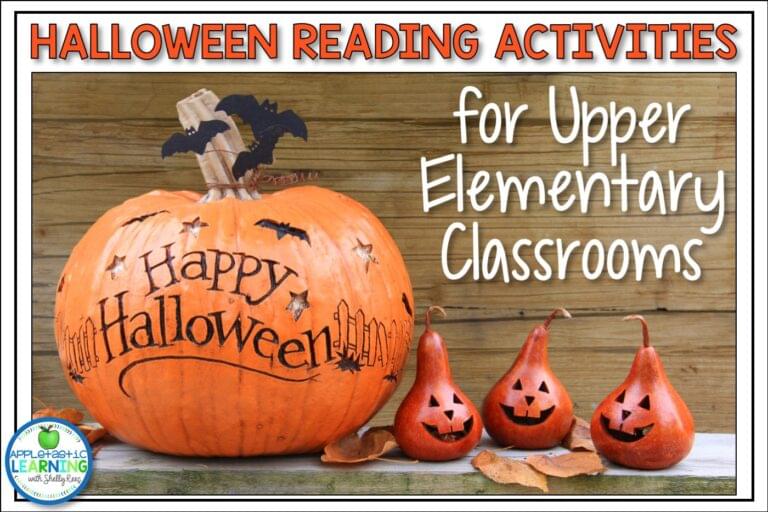


Teaching students how to build background knowledge is essential for their success in the classroom. With a strong foundation of facts and ideas, including prior knowledge, students can better understand more complex topics as they progress through school. But building background knowledge doesn’t have to be boring – there are plenty of fun ways teachers can engage their students while helping them acquire new information.
First, we need to understand that when students have background knowledge on a given topic in place, they more readily comprehend reading passages about that topic. Check out this interesting 3-part experiment carried out with a group of young students – the findings support the importance of background knowledge.
Here are 15 ideas that will make this part of learning enjoyable and effective!
1. Visual Representation
Use visuals such as images, videos, or real-life objects to help students make connections and build background knowledge.
2. Text-to-Text Connections
Help students connect text information from different sources. This will set students up to see how ideas and information are related.
3. Text-to-Self Connections
Encourage students to draw on their experiences and prior knowledge when constructing meaning from new material. To accomplish this, try asking open-ended questions that require students to think about their own experiences.
4. Storytelling
Use stories that capture the context of a topic or concept, helping students understand how it fits into the big picture of a subject matter area for a deeper level of understanding.
5. Virtual Field Trips
All aboard! Take a virtual (or real) field trip to help students better understand settings and historical events before diving into a new topic of study. This is a simple, yet effective, idea on how to build background knowledge!
6. Graphic Organizers
Use graphic organizers to help students structure and organize their thoughts, concepts and information. Students can use these to analyze, compare and contrast topics, as well as to make connections between ideas. Check out this packet of ready-to-go, printable graphic organizers!

7. Cues and Questions
Provide targeted questions and cues that will help guide students’ thinking in meaningful ways and spark inquiry. This type of instruction encourages higher level analysis while helping to build background knowledge. For example, ask students to compare and contrast items, people, or situations or give them an opportunity to think about their feelings in comparison with a character’s feelings.
8. Collaborative Learning
Incorporate collaborative activities such as partner talk or group problem-solving tasks so that students can share within their peer groups what they are learning. This kind of exchange provides a platform for deeper understanding as kids are able to explain their ideas in different ways to one another for better comprehension of the material.
9. Pre-Assessment/Activities
Administer pre-assessment activities to identify student prior knowledge levels and activate background knowledge before introducing new material or teaching a unit of study. This is a great way to plan instruction that is tailored to meet individual student needs for success!
10. Hands-On Experiences
Utilize hands-on activities, such as field trips, escape rooms, experiments, etc., that give students a direct experience with the subject matter area being studied. This helps create authentic experiences which are engaging, memorable and often times more rewarding than passive learning alone when it comes to ways on how to build background knowledge.
11. Cross-Curricular Connections
Integrate various topics and concepts from different subject areas to help students build background knowledge through a transdisciplinary approach. For example, discuss the hardships of the California Gold Rush while exploring the concept of supply and demand. This type of instruction helps students understand how different areas of knowledge are connected and how they can be applied in real-world contexts.

12. Literacy Strategies
Use literacy strategies to help students comprehend texts by activating prior background knowledge, making connections between new and existing information, and developing deeper understanding of text content. These strategies include summarizing, questioning, visualizing, inferencing and comparing/contrasting among other techniques.
13. Concept Mapping
Give students the opportunity to create concept maps, such as KWL charts and Venn diagrams, for topics that are being covered in class as a tool for visually representing their understanding. This allows them to see patterns and relationships between ideas which helps to strengthen their comprehension of the material. Concept mapping is one of my favorite strategies on how to build background knowledge!
14. Project-based Learning
Incorporate project-based learning activities that require students to design projects with an end goal of producing an outcome (such as creating a model, giving a presentation etc.). This kind of instruction gives learners an opportunity to deeply explore a single topic or concept while developing important skills such as research, problem solving and communication along the way. Check out this popular PBL unit, Design a Haunted House!

15. Picture Books
There is no age limit on picture books! They are a time-tested, truly wonderful way for students to build background knowledge and make connections in new ways.
There are many approaches on how to build background knowledge that can be used in the classroom such as cross-curricular connections, literacy strategies and using picture books. By leveraging these tools along with other hands-on experiences like concept mapping and project based learning, teachers have a variety of effective methods at their disposal. With the right approach, students will be able to make meaningful connections between prior experiences, concepts and new material being studied!


Hi, I’m Shelly! Thank you for being here. I love helping third, fourth, and fifth grade teachers with fun and engaging activities that require no to little prep! Let me help you by taking some of the stress and work off your plate.

©2022 Shelly Rees. All Rights Reserved.